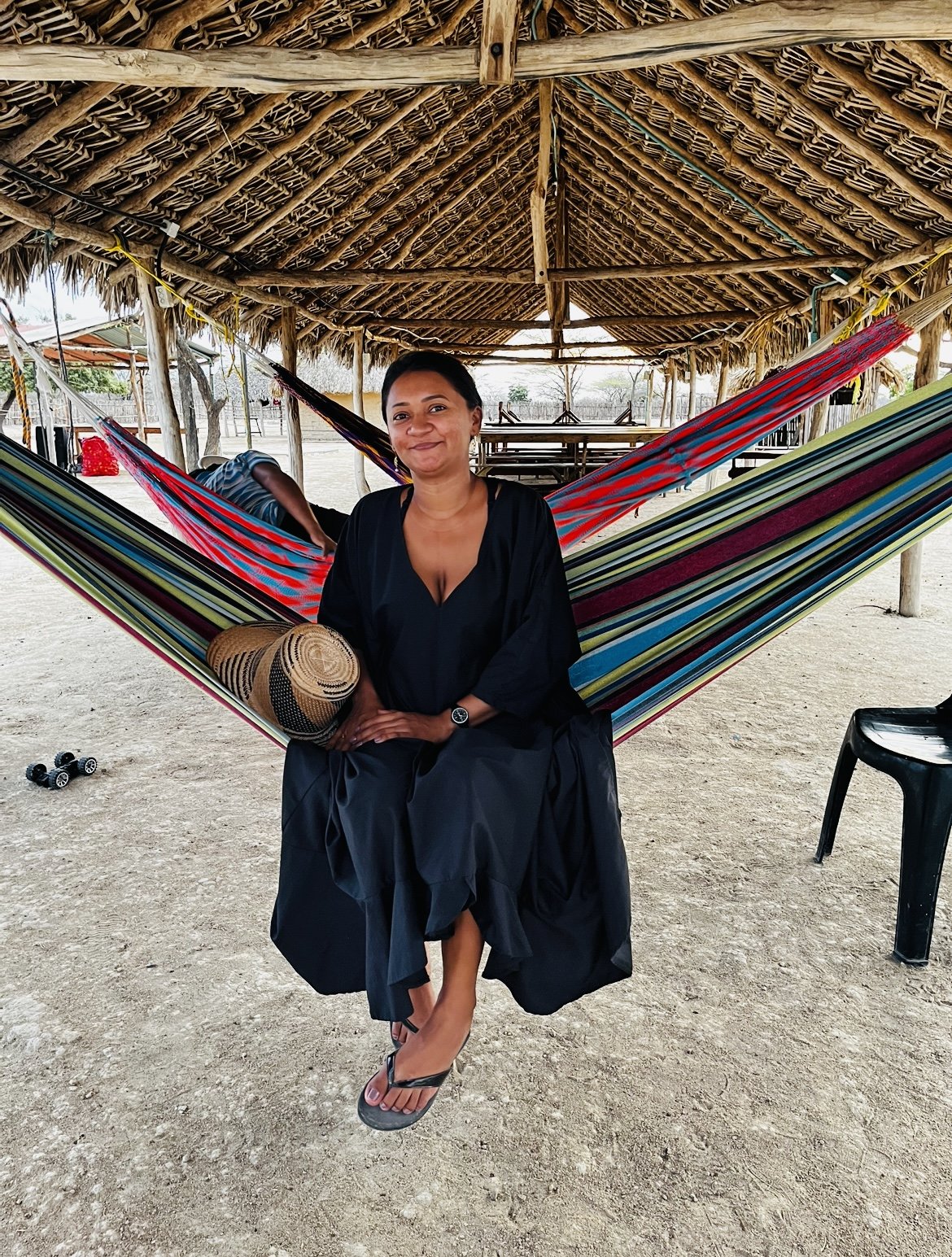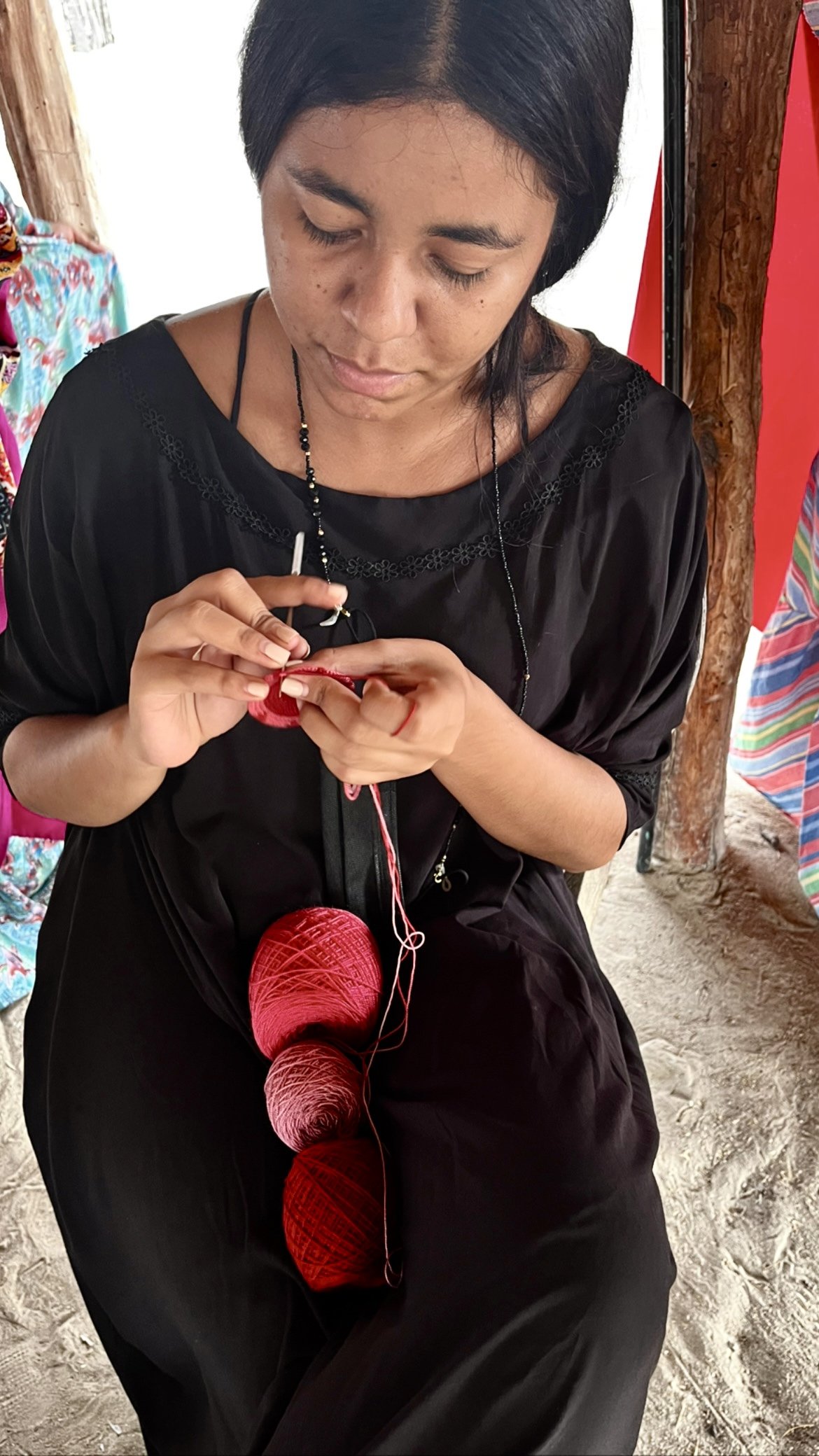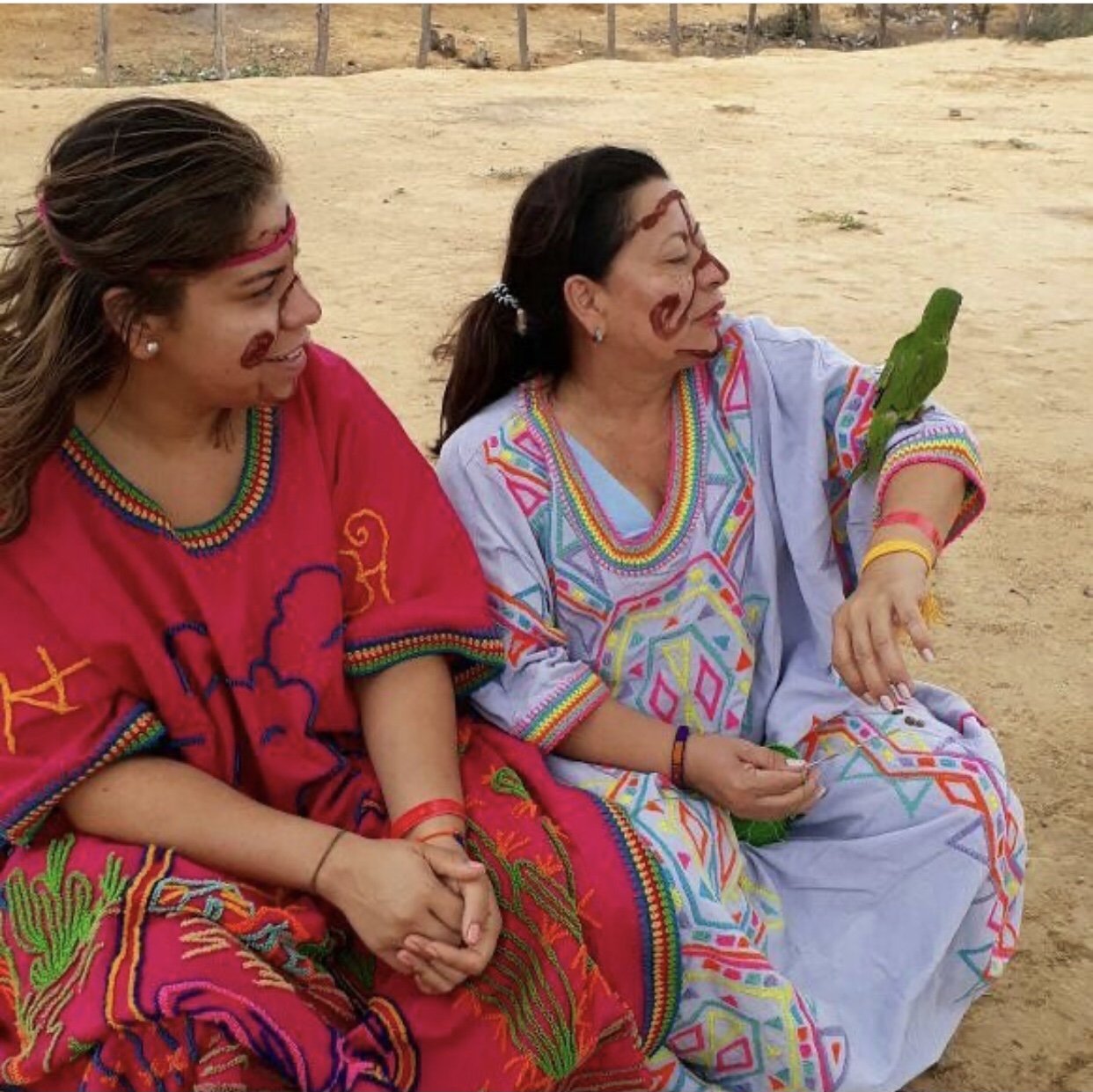
Meet Vanessa
A Glimpse into the Inspiring Lives of the Wayuu Community
A couple of years ago, I embarked on a journey to Colombia that unfolded into a series of enchanting and unforgettable encounters. From the moment I stepped off the plane, I felt as if I had stepped into a world where magic was woven into the very fabric of everyday life.
One of the most memorable experiences was meeting Vanessa at her rancheria in Riohacha. Her warm hospitality and willingness to share the rich heritage of the Wayuu community left an indelible mark on my soul. Vanessa's invitation to stay the night and sleep under the stars in a hammock was an extraordinary gift. The brilliance of the night sky was breathtaking, and I honestly enjoyed one of the most peaceful sleeps of my life.
Upon my arrival, I was welcomed with a fermented drink, its unexpected potency catching me off guard especially as it was only 10.30 in the morning! Not what I was expecting at all haha.
Sitting in a hammock, Vanessa began to introduce me to the Wayuu traditions and culture.
The Wayuu tradition is a nation that encompasses its own language, sense of belonging, culture, and customs. As Vanessa gestured to the land around us, she explained that the Wayuu are not nomads but migrants, moving between lands while maintaining their unique identity.
Vanessa's family, like many Wayuu, straddles the borders of Colombia and Venezuela. Despite their mobility, they hold a deep connection to their land, with each person belonging to the Wayuu nation. In each rancheria lives a community, the legal guidance can be either a male or female, making both legal and communal decisions.
These communities are not defined by the land's size but by the people within, often numbering around 150 individuals, all connected by their last name, which are symbolically tied to totem animals and plants. Vanessa’s community the name is Abscess Shana, meaning a black vulture.
The foundation of each Wayuu community rests on its women. Women are revered as the givers of life and the custodians of cultural legacy, passed down through a matrilineal society. Men play a supporting role, while the birth of a girl is celebrated with profound importance.
When a girl reaches puberty, she enters a small enclosure where she is isolated for days or even months, to transition from girlhood to womanhood. During this time, she learns essential Wayuu wisdom and traditions.
In the enclosure, the young girl receives the most important knowledge of the Wayuu wisdom and traditions. She is on her own with either her mother or a grandmother, where she will learn everything about the culture from this relative. One other woman can enter the enclosure, maybe a cousin or a sister, to bring in food. She is not allowed salty food or food with sugar. She will also have a drink called swaki (I might have spelt this wrong!), which is made with certain plants to cleanse herself.
The length of the time in the enclosure used to depend on the amount of time her mother also had in the enclosure, which could be up to seven years, but today things are changing. It can be a week, a month, but not seven years. In the enclosure, the girls have their hair completely shaven, which signifies the ending of childhood and the beginning of being a woman.
Vanessa's own journey into womanhood included seven years in such an enclosure, a privilege afforded by her family's status. She mastered the art of Wayuu weaving, creating hammocks and mochilas, each symbol and figure imbued with cultural significance. This intricate knowledge is a cornerstone of the Wayuu identity, preserved and passed on through generations.
Vanessa herself is not married but marriage within the Wayuu community involves a significant exchange. A prospective husband must compensate the bride's family with jewellery, land, and money, reflecting the loss of the woman's presence and contributions to her family and community. This tradition underscores the profound value placed on women in Wayuu society.
During my stay, I learned that Vanessa's mother, Cecilia, had recently passed away. In Wayuu culture, funerals are deeply significant, with large gatherings essential to honour the deceased. Initial burials include the person's favourite meals and attire, preparing them for a long journey to the next life. It is considered a bad omen if not many people attend the funeral and also in you don’t cry in front of the coffin.
Four years later, a second funeral is held, where the body is exhumed, cleaned, and the ritual repeated. This period of mourning highlights the Wayuu belief in the enduring spirit, distinct from the physical body.
The Wayuu do not celebrate Christmas or birthdays. Instead, they honour life's encounters, the arrival of rain, bountiful harvests, and the birth of baby girls. Vanessa's mother, Cecilia, had a profound influence on her community, dedicating her life to preserving Wayuu artistry and traditions. At 16, she began a project with Artisans of Colombia, connecting master artisans to perpetuate the cultural symbols and techniques.
Vanessa continues her mother's legacy through tourism and education, teaching at a local Wayuu school and selling handcrafted hammocks, blankets, and bags. She is also working on a project to welcome tourists to the rancheria so she can share the magic and wisdom of the Wayuu way of life.
Being the first westerner to experience this profound connection was an unparalleled privilege. The memories of my time with Vanessa and the Wayuu community will forever inspire me, reminding me of the beauty and resilience of their culture.



